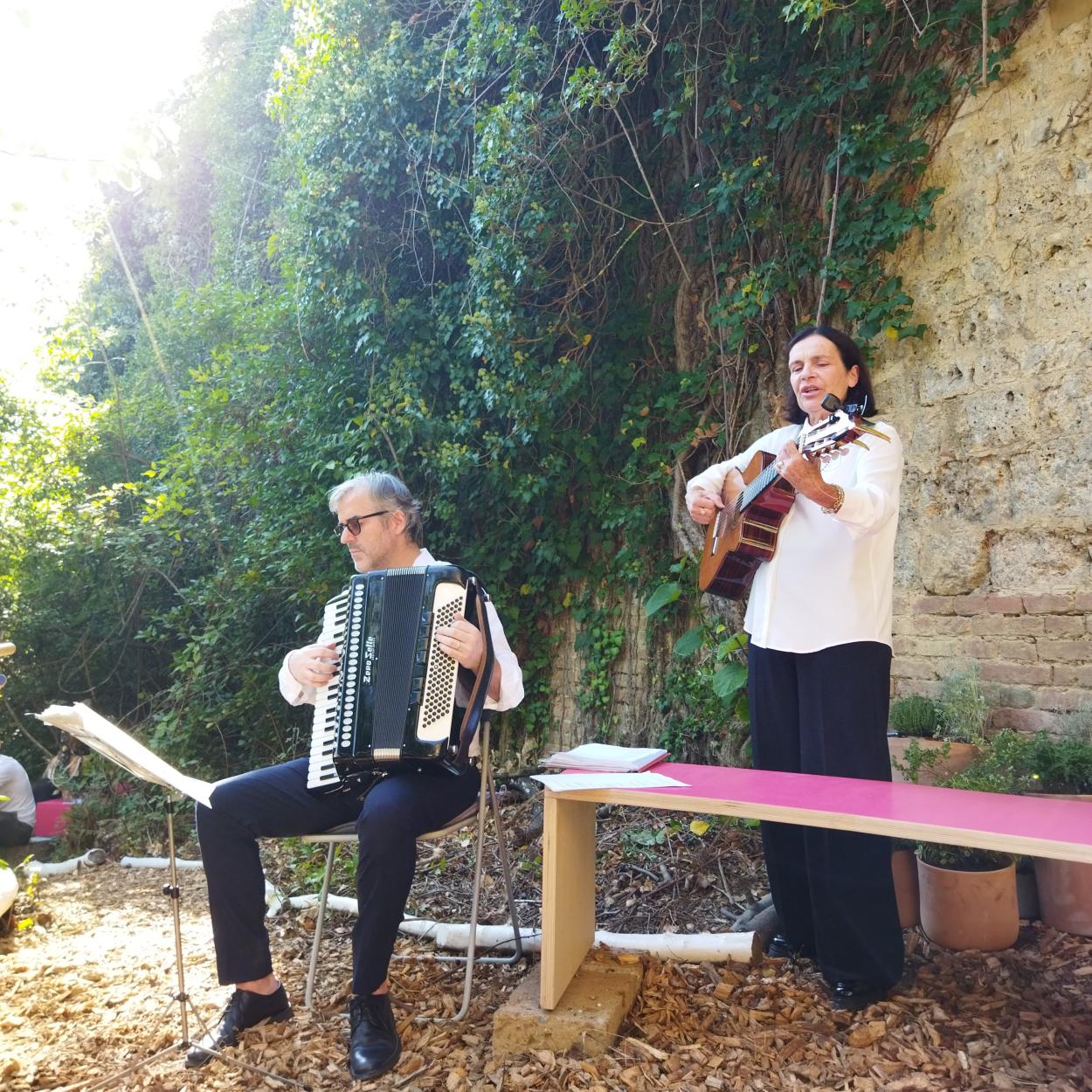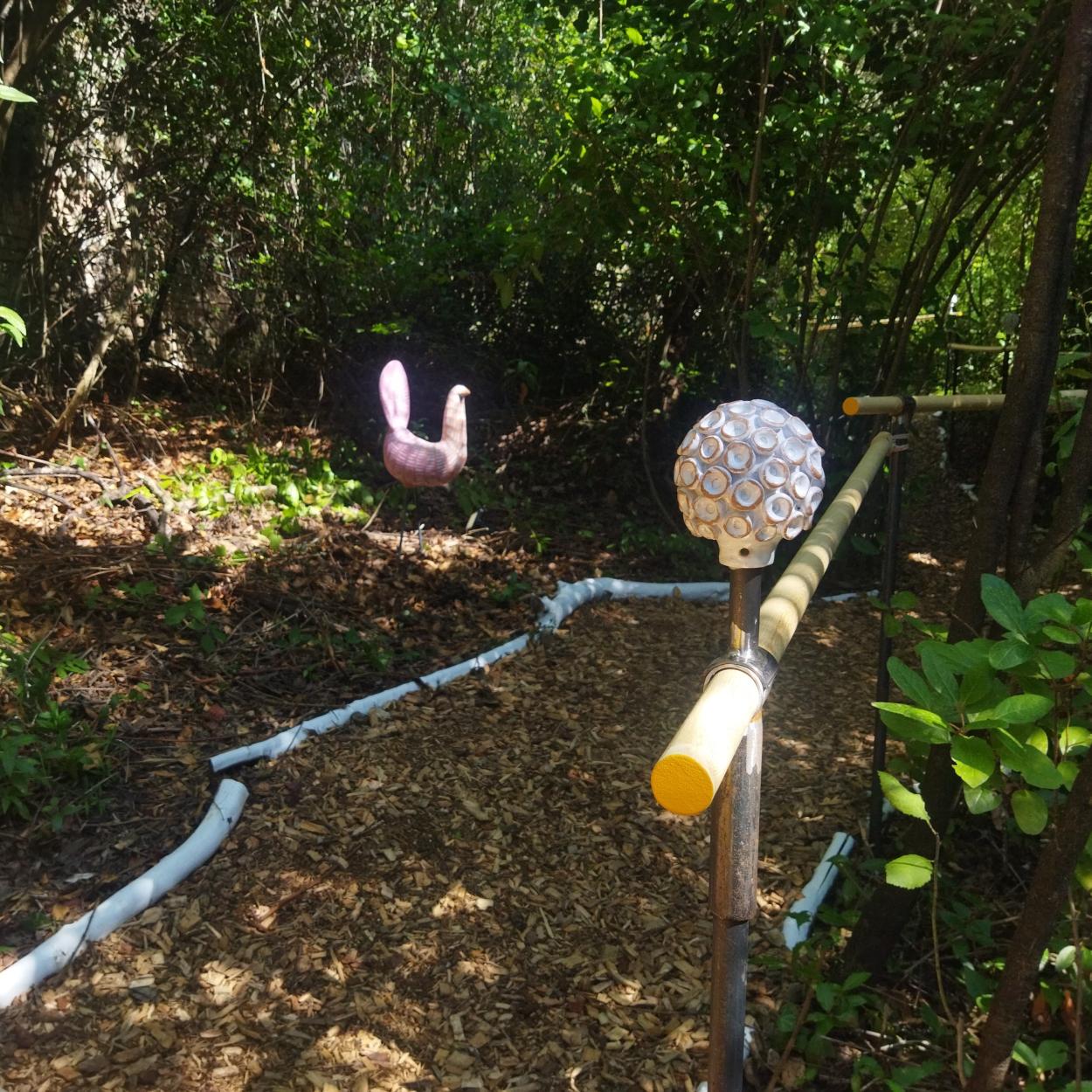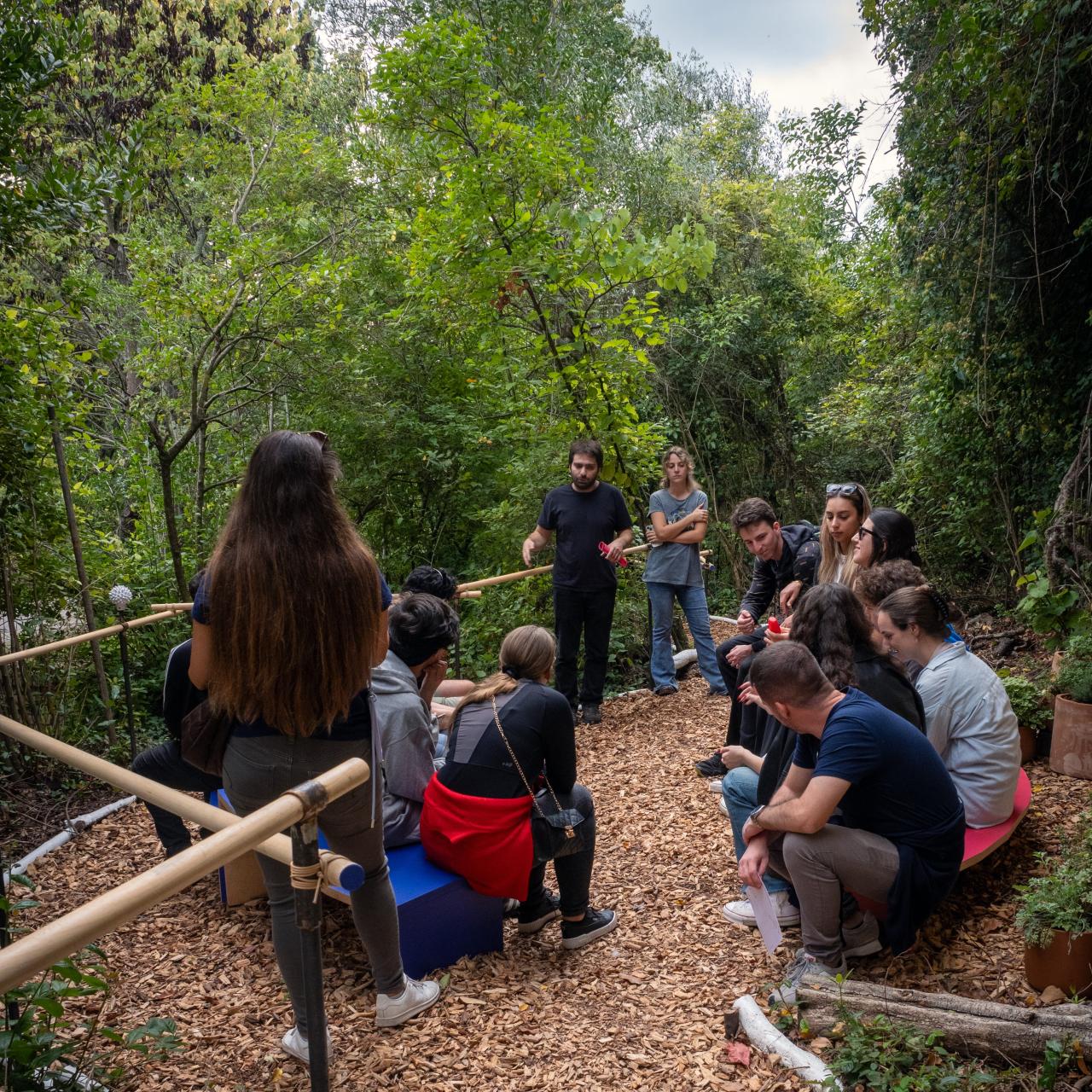Responding to the lack of accessible and inspiring urban gardens in Siena, and of passage spaces between urban and rural landscape, the Hidden Garden is a place rich in meaning, capable of offering moments of solitude and personal reflection, of connection through group activities and art happenings, as well as cultural stimulation through the proximity to the medieval walls and various art installations hosted over time. It refers to various groups of people, from the internal diverse community of Siena Art Institute that uses it on a daily basis to various groups that develop activities with it, and to all the citizens that profit from an open-access space for reconnection with nature.
The transdisciplinary approach of the garden’s creation successfully mediated different competences, worldviews and fields of knowledge, while its development is considered open and continuous, constantly being informed by community input and fresh art-initiated insights. This gives rise to a multi-dimensional garden that blends social inclusion with local cultural heritage and contemporary art. It is an important site, depicted in the city hall's historical fresco series (Ambrogio Lorenzetti, Allegory of Good Government, 1338-1339), that today functions as an exhibition space organically connected to the institute’s activities, while including design aspects that begin from deaf-blind experience. The permaculture principles that were applied in the design process have a key role in both protecting and regenerating the natural ecosystem of the place by stimulating biodiversity, as well as in offering an experience of undomesticated nature near the urban center. All the above aspects additionally create an educational environment that offers informal learning stimuli regarding inclusivity, sustainability, and planning approaches for the city of Siena and beyond.

The Design Process
The goal of the project is for this border place to become a space of experience, art, and encounter. With full respect for nature, and an intent to welcome and protect the delicate balance of this habitat of great environmental value, we want to make it a welcoming and inviting place to bring together various communities of the city. To achieve this, an interdisciplinary team worked on many different levels, with the involvement of the related communities in several crucial moments of the process.
The starting point of the project consisted of observation and study of the semi-forested area, which resulted in the design of a trail based on the morphology of the terrain and on the characteristics of the soil, and which harmoniously follows the natural lines of the forest. Areas were subsequently identified in the pathway, to facilitate personal or group stay and activities, to house art installations and to promote the connection both with the medieval walls and the natural environment itself.
According to basic principles of organic regenerative agriculture, during the work activities a circular system that mimics the natural model was created. All of the prunings produced were selected and reused on site to serve multiple functions: to physically realize the path borders, as vegetation cover, to delineate and mulch the path. A whole range of biopreparations, produced on site from local materials, were also constantly used throughout the area to stimulate the degradation of the huge amount of prunings produced, promoting soil regeneration processes.
In terms of accessibility and inclusion, after several consultation meetings with members of the deaf, blind and deaf-blind communities, we have implemented several design tactics to accommodate different wants and needs and to make the garden welcoming and usable. Color interventions across the path and a guiding handrail offer a more clear and safe walking experience. Custom-made outdoor furniture on organic shapes and other moveable sitting options encourage gatherings and conversations both verbal and in sign language.
Wandering around the Hidden Garden, the senses are constantly stimulated: smells and sounds of the living ecosystem, the play of light and shadow created by the trees, and contact with the medieval walls offer unique auditory, visual, and tactile experiences. Environmental stimuli are complemented by purpose-built multi-sensory elements: a tactile path with specially-made ceramic elements, a relaxation area with aromatic plants adjacent to the sitting area, and an outdoor multimedia library that transforms the garden into a diffuse reading area.
Various other architectural decisions and details add aesthetic value to the project, such as the handcrafted poufs that represent the more playful aspect, along with color choices that combine accessibility and character. The materials used for the interventions were carefully selected to be sustainable: wood derived in part from the Garden's routine pruning and maintenance operations, and local clay and terracotta, which enrich the cultural value of the entire project.
In addition, the project was developed by taking into account the values and working principles of the New European Bauhaus (NEB), which relate to the social, cultural and green transition towards a more sustainable society, in participatory, transdisciplinary and multi-level ways. Among the multiple levels that the design and realization process of the Hidden Garden aligns to the NEB pathways, we can highlight the repurpose of material resources, the non-invasive and temporary character of the design interventions which adapt to the place’s morphology, a placemaking process that raises awareness of the local natural, cultural and social context, as well as the promotion of intergenerational, multicultural and inter-ability togetherness and connectivity. The ongoing development of the place is further characterized by strong community-engagement processes and interdisciplinary teamwork, which result in design solutions with a fine balance between different areas of knowledge and experience.
The Hidden Garden is a site-specific intervention with a distinct identity that relates to the place. However, the methodology of combining permaculture values with accessibility elements and elegant design language, in a dialogical process of in-situ design and construction, can be considered a replicable and transferrable element. Our hope is that it will act as an example of possible pathways for a paradigm shift in urban and landscape design that aims for meaningful and sustainable re-connection with nature.

A Place for Community
The Siena Art Institute is dedicated to community-engagement projects and the Hidden Garden is no exception to that. Already from the initial phase, the whole internal community of staff, faculty, students and volunteers was part of the collective imagining of the garden. Moreover, participatory processes have been taking place, both during the design phase and afterwards, with multiple interactive consultation sessions involving and giving the opportunity to citizens, groups and communities to express their opinion on the design process, and to affect it through their feedback in many crucial moments.
At the same time, a continuous series of guided visits offers the opportunity to dive behind the scenes, to explore and appreciate both the garden’s design and its rich ecosystem. These tours address a diverse audience consisting of citizens and visitors who wish to discover hidden aspects of Siena, as well as of local or international groups who make educational visits.
Another way that the Hidden Garden relates to the Siena Art Institute’s activities is by the various workshops that are taking place here, both as part of the ordinary semester courses and of special projects. The interdisciplinary character of the place offers multiple learning opportunities and the treated themes span from sustainability and biodiversity to accessibility, architecture and art, while the format varies and can include open-air lessons, drawing sessions or design laboratories for all ages.
As a space open to the local community, the Hidden Garden has hosted numerous cultural events since its public inauguration, adding unique character and intimacy to Siena’s cultural scene. From art exhibitions and live music gigs to book presentations and performances of any kind, the possibilities are endless!
The Hidden Garden itself is the result of a community effort. Its creation was possible through a crowdfunding campaign managed by the Siena Art Institute, which involved many local and international donors, both individuals and businesses, while Fondazione Monte dei Paschi di Siena, the main local bank foundation, offered a matching donation to contribute to the creation of the space.
The makers’ community, which was directly involved at different levels in the design and development of the Garden’s creation project, was a varied team of professionals and volunteers, and numbers more than 20 people. The team included architects and designers, artists, cultural and communication experts, craftspeople, accessibility scholars, biologists and permaculture experts. At the same time, another crucial contribution was that of volunteers, both local ones with long-term instrumental role on the place’s development and international ones coming to Siena through programmes such as WWOOF and the European Solidarity Corps.
Antonis Douroudis (architect/curator/researcher)


